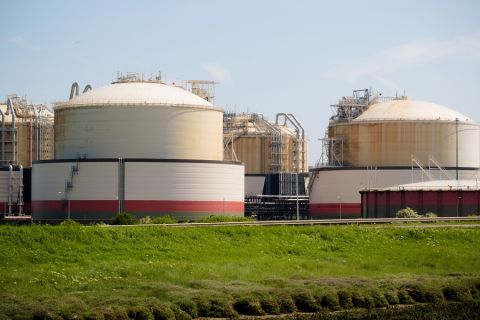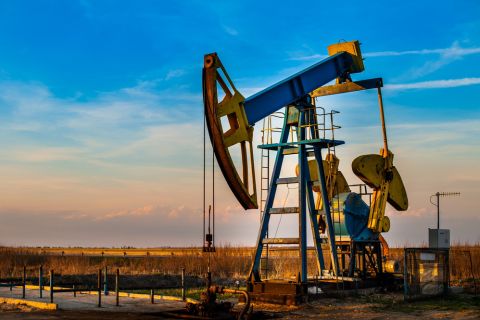
In an exclusive interview with Hart Energy, Exxon’s Prasanna Joshi said the company is pushing ahead with its carbon capture projects in Texas but that the company plans to expand beyond the U.S. (Source: Shutterstock.com)
CALGARY, Alberta – Exxon Mobil Chairman and CEO Darren Woods was clear at the opening of the World Petroleum Congress that advancement and breakthroughs in technologies are needed to tackle global emissions.
Exxon, of course, isn’t waiting for someone else to develop those technologies. In an exclusive interview, Prasanna Joshi, vice president of the company’s Low Carbon Solutions technology portfolio, told Hart Energy the company is already rolling out new technologies or partnering with others to move ahead.
“Technologies that have longer runway or significant runway, where we can add our competitive advantage and capabilities, we are doing it in-house,” Joshi said. “A few examples are direct air capture, [which] is something that is exciting in our portfolio. Then we are working on a few advanced hydrogen technologies,” starting with natural gas.
Exxon has allocated $17 billion to the development and implementation of low-emissions projects over the next five years.
Where Exxon doesn’t have its own expertise, it is enlisting partners and licensing technologies.
“For technologies that have significant runway, but we necessarily don't have anything in our own kit, we partner,” he said. “And then, technologies that are already mature, we go and license those things.”
Exxon’s licenses include carbon capture technology from both Mitsubishi Heavy Industries and Honeywell.
Honeywell’s carbon capture solvent solutions are used in Exxon Mobil's Baytown low-carbon hydrogen, ammonia and carbon capture facility outside of Houston. This facility, which is expected to begin producing in 2027-2028, is expected to be the “largest blue hydrogen project in the world, producing 1 Bscf/d of hydrogen,” according to Joshi. Blue hydrogen, as opposed to green hydrogen, is derived from fossil fuels.
“We are color agnostic, but blue hydrogen is something that we are focusing on because technology is available to be deployed today, both for manufacturing the hydrogen efficiently at scale and capturing the carbon emissions at the backend,” Joshi said.
Exxon itself has extensive experience with carbon capture and storage (CCS). Over the past 30 years, the supermajor has been involved in CCS and today Exxon has a capture capacity of 9 million tonnes per annum (mtpa). In the past two decades, the company has cumulatively captured more CO2 than any other company – 120 million metric tons, or approximately 40% of all the CO2 produced by human activity.
Through Exxon’s own innovations, as well as collaboration, Joshi said the company is intent on building out those projects.
The cornerstone of Exxon’s approach towards CCS innovation is to “deploy solutions that are available to be deployed at scale,” he said.
In January, the company announced it had awarded a FEED contract for the world's largest low-carbon hydrogen facility in Baytown. The project, known as the Houston Hub, includes production of 1 Bcf/d of low-carbon blue hydrogen and a CCS facility.
RELATED: Exxon Mobil to Build Major Hydrogen, Carbon Capture Plant Near Houston
The hub is a concept that Exxon is rolling out globally, not just in the U.S. Exxon aims to build CCS hubs close to high-concentration emitters, since it’s easier to capture large amounts of carbon at scale. Exxon has partnered with heavy emitters at an economic price point and identified the most effective areas to build their CCS hubs, Joshi said.
In Louisiana, Exxon works with CF Industries to capture about 2.2 mtpa of emissions from the fertilizer manufacturer and then sequester close by at Exxon’s Pecan Island site onshore. Then, similarly, NuCor steel manufacturer is an Exxon partner to capture 0.8 mtpa of emissions that’s sequestered in Louisiana as well with Pecan Island. Linde is the third announced project to also capture 2.2 mtpa and be sequestered somewhere in the Gulf Coast near Port Arthur, Texas.
For CCS in particular, as well as other innovations on the way, the company is confident in its ability to meet the net-zero challenge.
“So a lot of that brings experience and capabilities that we have developed over the years consistent with our oil and gas operations,” Joshi said. “It's a technology that we know. It's proven, but we also know how to do it safely because of that experience.”
Recommended Reading
Russia Orders Companies to Cut Oil Output to Meet OPEC+ Target
2024-03-25 - Russia plans to gradually ease the export cuts and focus on only reducing output.
BP Starts Oil Production at New Offshore Platform in Azerbaijan
2024-04-16 - Azeri Central East offshore platform is the seventh oil platform installed in the Azeri-Chirag-Gunashli field in the Caspian Sea.
Exxon’s Payara Hits 220,000 bbl/d Ceiling in Just Three Months
2024-02-05 - ExxonMobil Corp.’s third development offshore Guyana in the Stabroek Block — the Payara project— reached its nameplate production capacity of 220,000 bbl/d in January 2024, less than three months after commencing production and ahead of schedule.
Venture Global, Grain LNG Ink Deal to Provide LNG to UK
2024-02-05 - Under the agreement, Venture Global will have the ability to access 3 million tonnes per annum of LNG storage and regasification capacity at the Isle of Grain LNG terminal.
What's Affecting Oil Prices This Week? (Feb. 5, 2024)
2024-02-05 - Stratas Advisors says the U.S.’ response (so far) to the recent attack on U.S. troops has been measured without direct confrontation of Iran, which reduces the possibility of oil flows being disrupted.




